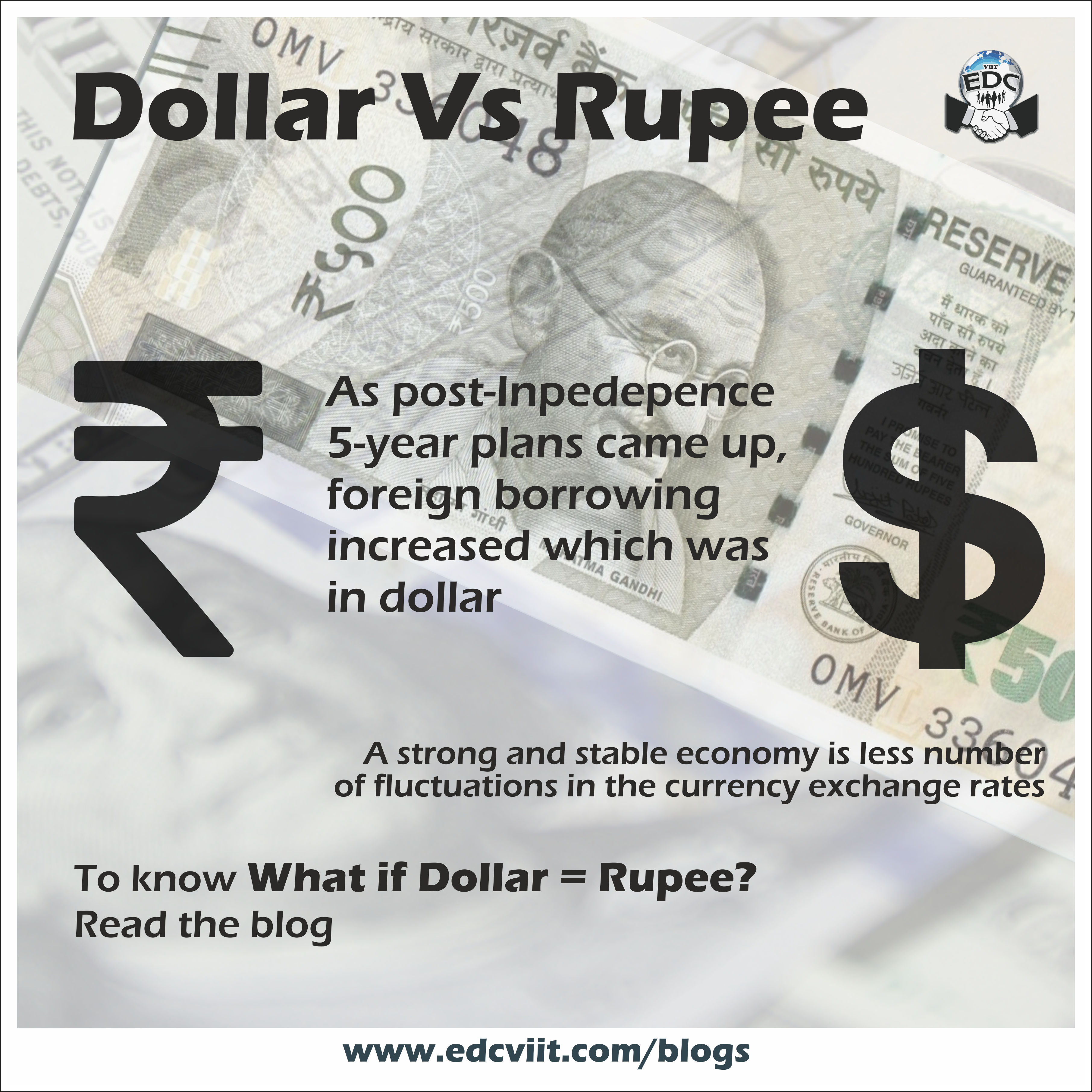Dollar Vs Rupee
In many ways, to just give an opinion on something is very easy but to back it up with sound facts is a task. A task not many are particularly skilled at. But we at EDC VIIT tend not to just throw away our opinions into the public. We make sure to explain facts and generate interest among our viewers.
One hot topic that almost everyone has an opinion about is “dollar vs. Rupee”. Every morning you read the conversion rates in the news while sipping hot tea. Every evening you discuss the depreciating value of the Indian Rupee, coincidentally again while sipping your evening tea. But most of these conversations are rather baseless at times and can’t really gauge the real situation. What exactly is the dynamic between dollar and rupee? How exactly is the rate governed? Most importantly, will the scenario $1=₹1 be a good one or a bad one? Read on and find out!

A Brief History of Rupee
Documenting the history of the currency since the era of independence, it was almost decades before the rupee started falling drastically. In the initial years of our independence, there were foreign borrowings in the country’s balance sheet. But with the implementation of the 5-Year plan, our borrowings started. Due to these borrowings being in dollars, the value depreciated. With India being a newly independent country, the rupee was directly interlinked to the British Pound Sterling. A drop in the value of pound caused a direct drop in Rupee. In our initial years we imported way more than we exported which resulted in a gradual but consistent payment deficit. The downfall was however delayed by foreign aids. However, with the consequent Indo-China and Indo-Pak wars in the ’60s, things started spiralling with the budget going overboard while foreign aid was withdrawn. These deficits had to be paid for by selling the Rupee and buying Dollars. After our economy was opened up for the foreign markets in the 90s, rupee saw a steep decrease. One which we are still facing and are struggling to get out of.
Determining the exchange rate
Basically, there are three types of economies – rigid, hybrid and flexible. India follows the flexible economy system. This means that the valuation of the currency is determined by market forces namely supply and demand. The supply-demand analogy is similar to the supply and demand of any product. Consider a product being produced on a large scale but is not getting sold a lot. Its price will be reduced to increase sales. On the other hand, if there is a lot of demand and supply is restricted, the price will be shot up several folds. This same mechanism works for rupee. Supply in an international market and its demand governs the conversion rate of how many rupees is one dollar.
Reasons for Depreciation
Rupee’s downfall is ongoing and most people blame the government. But is that really so? Not really! One of the major reasons is the spike in the prices of crude oil. With it being one of our major imports, there is nothing much we can actually do about it. The strength of the dollar is also one thing that is nowhere near deteriorating. This will badly affect us with all imports with many of them being ones we cannot avoid. This however does help us in all the exports as much more value is obtained for the same valuation of goods. Devaluation or depreciation can be explained to a Layman as the recognition of the country’s total currency being significantly less than what it used to be.
Rupee=Dollar??
We are a major exporter to the US but ever wondered why we are compelled to do so? It’s just because of currency difference. Also, it helps generate foreign reserves in the country. But if ₹1=$1, then why will anyone send goods to the foreign markets. A thing valued at ₹1000 in India will cost $1000 outside. Who’s going to buy it then? Regarding jobs, a guy working at a multinational company earns ₹120000, but with equal conversion, he has to be paid $120000. Now that’s just preposterous!
To summarize, having a stronger economy doesn’t mean having the valuation of the currency as high as possible. That doesn’t make any sense. What signifies a strong and stable economy is less number of fluctuations in the currency exchange rates. The strength of currency should depend on how productive the nation is.